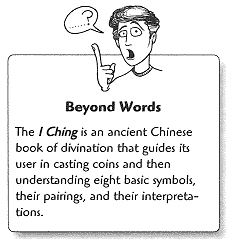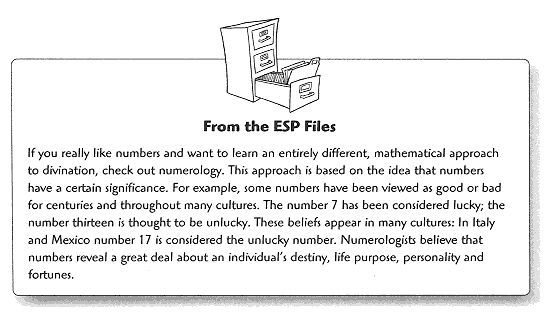|
|
|
|
|
|
|
The I Ching is a book that explains an ancient divination method practiced in China for centuries. First written down in about 500 B.C., the I Ching is also known as the ''Book of Changes." It is designed to show how any and every event is susceptible to change. People who are well acquainted with the book claim that it seems to possess its own form of intuition: It adapts and expands its meanings in ways that reach its reader on whatever level they're at. |
|
|
|
|
|
|
|
|
 |
|
|
|
|
|
|
|
|
When consulting the I Ching, a "reader" throws three coins and, based on the heads/tails positioning of six different throws, she can look their interpretation in the book. Using this interpretation, one can divine how a specific issue or event is likely to be affected by various actions. While showing the effects of these actions, the book also offers guidance as to what would be the wisest path to pursue. The I Ching is based on the principle that two basic forms of energy run through everything: yin (negative and receptive) and yang (positive and assertive). Each energy is represented by a line: Yin is broken and yang is solid (or strong). These lines are combined into sets of three to create eight basic symbols. These eight symbols, arranged according to a random coin toss, are used to create a series of 64 hexagrams. This pattern of hexagrams is used to do a reading. To understand how all of the symbols combine to create the meaning of each hexagram and influence the interpretation of the whole, the reader consults the I Ching. |
|
|
|
|
|
|
|
|
 |
|
|
|
|
|